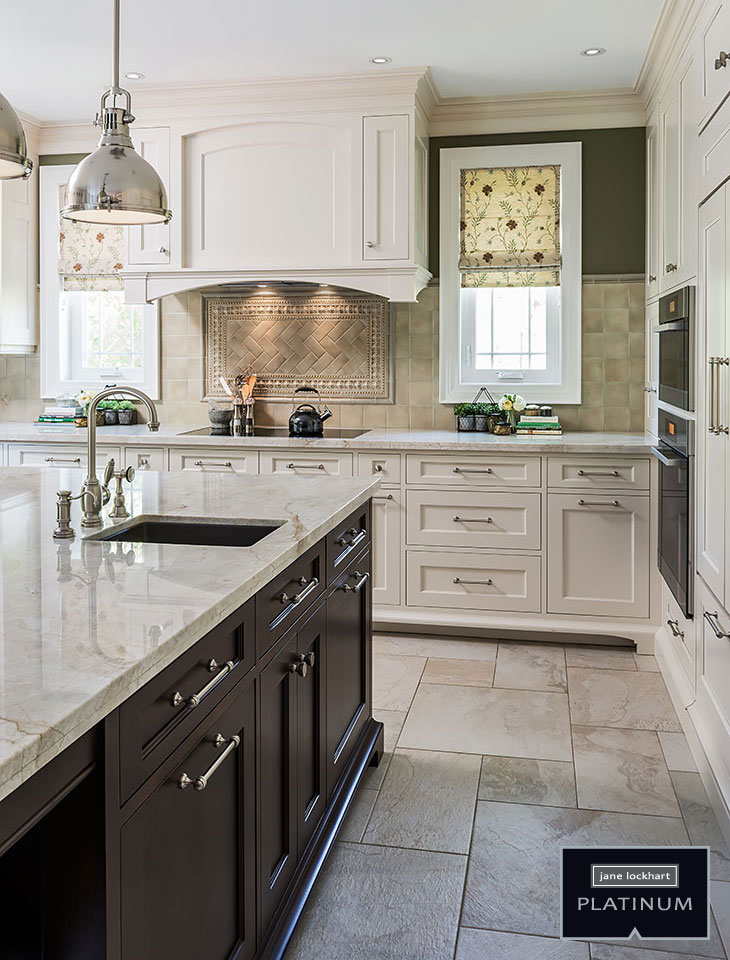
The backsplash is an important part of your kitchen that often goes overlooked … until it comes time to complete it! You should not underestimate its importance to the kitchen —where visual beauty and functionality can come together to make or break the beauty of your kitchen.
Are you tired of your basic, all-white kitchen? Maybe it’s time to realize the design possibilities of incorporating pattern, colour and detail. A kitchen backsplash can add that design element. Consider ceramic tile, glass, wood, tile that looks like wood, aluminum and even fabric—but don’t use fabric. Ceramic is the popular choice when it comes to cleaning the inevitable oil and grease splatters on a backsplash.
Here’s what you need to know about them.
Don’t Overlook the Importance of Grout

Christopher Sturman
In the past, I’ve mentioned that use of dark cabinetry to contrast the backdrop of a white room is an effective method to bring energy to a dull space. The same thing can be said about the grout in a backsplash.
Grout not only holds your tiles together, it can make them pop. For example, if you were thinking of going bold with white tiles, dark grey grout would really make the white tiles stand out. Contrast is energy.
Subway Tiles
Subway tiles are here to stay! As noted in my 2017 Design Trends Report, subway tiles are a great choice. The pattern “plays well” with accessories, kitchen cabinetry, windows and appliances. Today’s more contemporary subway tiles look hand-made, with more texture.
Multiple Ways to Design a Backsplash
A backsplash is most commonly designed to be built between the countertop and cabinetry you store your plates and glasses. However, there is more than one way to design your backsplash.
One way to visually add height to your kitchen is by carrying the tile pattern all the way up to the ceiling, giving your kitchen a European feel. With this style, you’ll see more open shelves and less upper cabinetry, so you’ll need to be creative with your storage options.
Mirrored Tiles

A great way to add drama or a focal point is to add either lighting or mirrors. Traditional antique-mirrored tile with a beveled edge is an elegant choice. Stack them for a contemporary take. That’s what draws the eye making it perfect when you want to add a focal point.
Frame Your Focal Point

To add texture, colour or added style, you can create a pattern within the pattern design. It can be as simple as using the same tile with a different pattern or as intricate as tile plaques with coordinating accent liner bars on the perimeter of the frame.
In our portfolio, you’ll see that in some of our kitchens, there are picture frames above the range. This additional focal point isn’t exactly a backsplash but it’s another vertical surface to add personal style.
Hand-Painted Backsplash

Piggy-backing off of picture frames for your backsplash, a hand-painted mural is another great way to add a focal point to your kitchen. You can either have it custom drawn or use a pre-made tile motif. If you’re an art lover, adding a hand-painted tile mural is another way to position art in unexpected places.
If done correctly, the backsplash is an opportunity to create added dimension and design in your kitchen. With so many different options to choose from, you can design a kitchen that’s not only functional, but also visually appealing.

